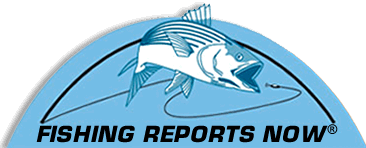Editor's Note: The Marine Recreational Fishing Statistical Survey (MRFSS) is the survey of the fish population that the government uses to establish recreational fishing catch limits.
From the Jersey Coast Anglers Association's June 2008 Newsletter:
I'm No Expert, But!
By Tom Siciliano
The (MRFSS) data for 2007 (have) been published. A Constituent Data Review Workshop was held in Alexandria, VA on May 5-6. I have complained about the data for a long time so I decided to spend a day and half sitting down with the authors, reviewing the data and listening to the explanations. I came away with more questions than answers.
When I got home I looked more closely at the data and even more questions come to mind. What did I find and does the information make sense to you?
As a scientist when I did an experiment and got a result that I did not expect or didn’t make sense, I would repeat the test and try to find out why the result varied from what was expected. I would not issue a report until I was sure of the result and had a clear understanding of what happened.
The top 5 species listed for NJ are Black Sea Bass, Bluefish, Summer Flounder, Tautog and White Perch. Notice anything missing? Can anyone really believe that more white perch are caught in NJ than striped bass? The numbers are even more confusing if you compare the individual pages of the report. On one page the total estimated harvest for striped bass is 1,700,759. On another page the White Perch total estimated catch is listed as 829,639.
I pointed out that it did not seem right that White Perch would be ahead of Striped Bass. I got an email with the White Perch catches for the past 4 years. The catches were 916,966 in 2003. In 2004 they dropped to 98,304. In 2005 they went up to 433,665 and up to 811,451 in 2006. It doesn’t seem logical to me. How about you?
The experts talked about how good the quality review of the data is and yet the Striped Bass catch seems to me to be twice that of the White Perch. But then I’m not an expert.
But wait, it gets even more confusing. Have you ever gone fishing and not caught a fish? Now be honest, we all have. Guess what? According to the MFRS report that didn’t happen because they only report trips where fish were caught. I fish with a friend who is probably the best fluke fisherman that I know. He will consistently be the high hook on every boat that he fishes. He also keeps meticulous records since he measures and tags all the short fluke that he catches using ALS tags. I asked him to compare the fluke data with his records. His average number of keepers per trip is 1.74 fish on 143 trips and the number of shorts averages 8.94 per trip. According to the 2007 statistics the average fisherman caught 6.87 shorts per trip and 1.83 keepers per trip. How can this be? Didn’t the National Marine Fisheries Service ever hear that 10% of the fishermen catch 90% of the fish? One trip on a party boat would convince them of that fact. The MRFS survey only reports fish from those trips that were successful. If a fish was not caught on the trip it is ignored. This single item makes the data so suspect as to make it unusable.
Want more examples of the accuracy of the report? Let’s look at the individual sources making up the catch for Summer Flounder. Charter boats harvested 98,269, party boats 52,811, private/rental boats 1,143,897 and shore anglers 31,011. I personally find it a little hard to believe that shore anglers caught 60% of that caught on party boats. But then the figures don’t lie.
Looking a little deeper into why some of the numbers don’t make sense, let’s examine what the data is based on. There were a total of 723 shore anglers intercepted, 1457 intercepts on party boats, 740 intercepts on charter boats and 1816 intercepts on private/rental boats for a total of 4736. This number is expanded to an estimated 7,416,270 angler trips. Doing the math that is a sampling rate of 0.000638. Seems a little light to me but then I’m no expert. Looking at it from another angle and assuming that most of the sampling is done over 300 days instead of 365, that is almost 16 samples per day. Wow, that many! Now lets consider the difference in the fishing from the Sandy Hook area to the Delaware Bay area. Where were those samples taken?
In contrast to this paucity of information let’s take a quick look at the JCAA survey that has been conducted for the past 4 years. There have been between 800 and 930 boats fishing each year with an average of three anglers per boat. The survey return rate has been about 50%. The information is for one day in 12 ports from Jersey City all the way down to Fortesque. That is between 1200 and 1400 fishing results for one day. So what does NMFS do with this wealth of data? You guessed it - nothing!!! They don’t know what to do with too much information. Makes sense to me!





